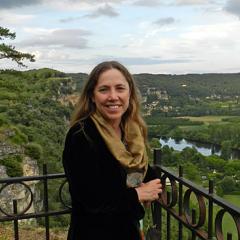Margaret Torn Q&A in response to her Nature article on what will happen to soil carbon as the climate changes
Scientists don’t know what will happen to this carbon in response to climate change. It could enter the atmosphere as CO2, a greenhouse gas, and further accelerate climate change. But how much — and when — remain a mystery.
An international group of scientists has proposed a new approach to soil carbon research that seeks answers to these questions. Their roadmap is published in the October 6 issue of the journal Nature and is co-authored by Lawrence Berkeley National Laboratory (Berkeley Lab) soil scientist Margaret Torn.
The collaboration started two years ago when Torn and 14 other scientists from ten countries met at a thousand-year-old monastery in Lake Constance, Switzerland. It was an eclectic gathering, reflecting the wide-ranging scope of the problem. Until recently, what scientists thought they knew about soil carbon was wrong. And new insights haven’t yet been fully implemented into global climate models.
The stone hallways echoed with the voices of an archaeologist, soil scientists, marine chemists, experts in microbial genomics, and others. For four days, the Lake Constance Think Tank on Global Change and Feedback From Global Carbon Dynamics — the name given to the group by the European Science Foundation — discussed what’s known about soil carbon cycling and what’s needed to better predict how soil organic matter will respond to climate change.
In the Q&A below, Margaret Torn explores why the group got together and what the future holds.
